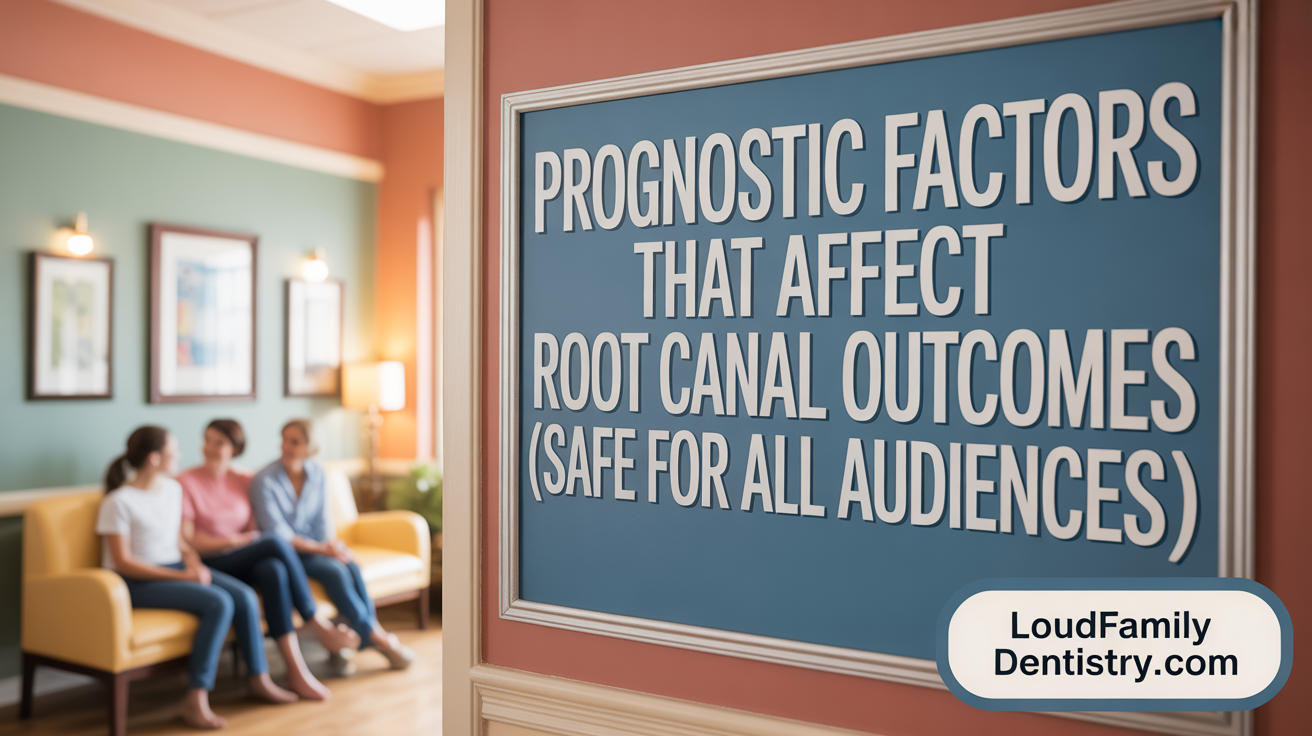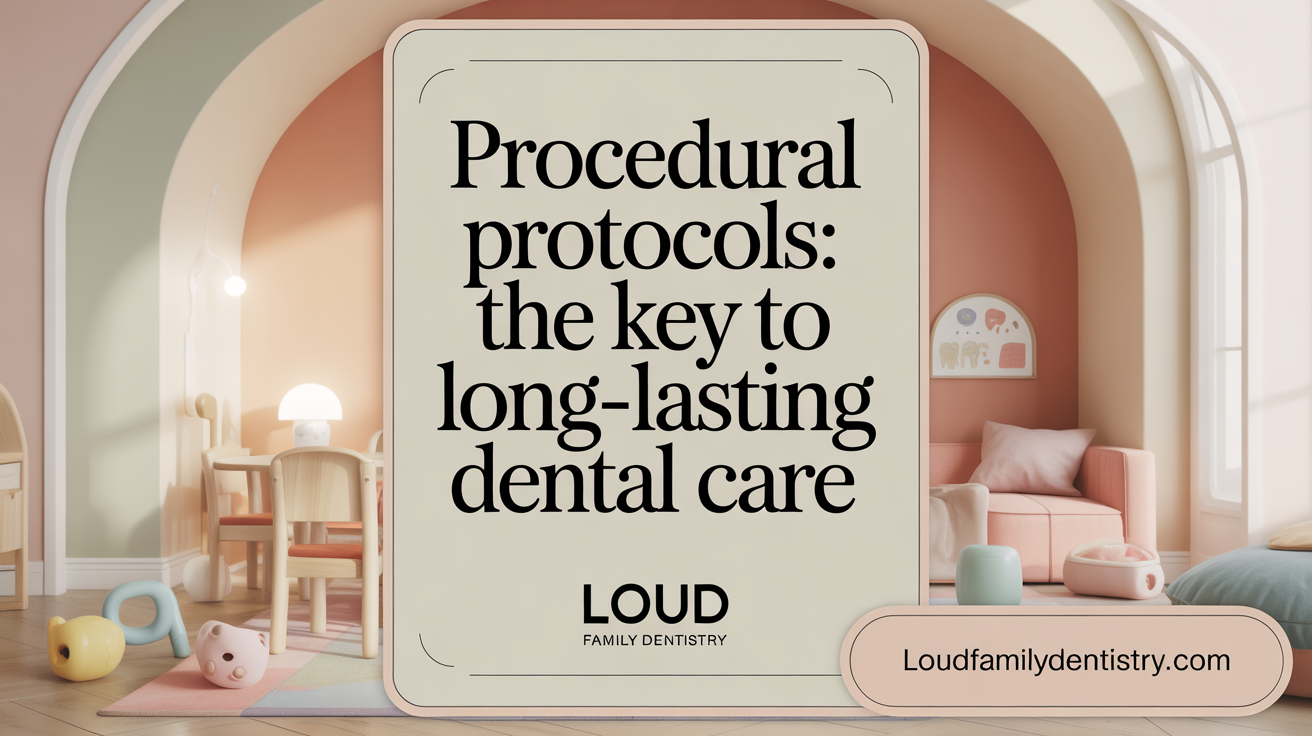Introduction to Root Canal Therapy and Its Role in Saving Teeth
Root canal treatment is widely recognized as a critical dental procedure aimed at salvaging natural teeth that would otherwise require extraction due to infection or damage to the pulp. Given the procedure’s prevalence and significance, understanding the success rates and longevity of root canal-treated teeth is crucial for both dental professionals and patients. This narrative explores evidence-based data on long-term outcomes, survival statistics, and factors impacting the effectiveness of root canal treatment in preserving natural teeth.
Key Facts on Long-Term Survival and Prognosis of Root Canal Treatments
- Root canal treatment exhibits a 97% retention rate after 10 years.
- Approximately 68% of treated teeth survive after 37 years, indicating long-term durability.
- Success rates are 93-94% at 10 years and around 81% after 37 years, showing gradual decline.
- Restorations, especially crowns, nearly double the survival rate of root-treated teeth.
- Systematic reviews report success rates between 86-93% over periods up to 20 years for non-surgical RCT.
- Pre-operative apical radiolucency nearly doubles the risk of tooth loss, highlighting case assessment importance.
- Teeth restored promptly with crowns within 60 days have better long-term outcomes.
- Large studies show over 95% survival for primary RCTs, but retreatments have success rates around 77-83%.
- Dental implants exhibit higher survival (~98.3%) compared to root canal-treated teeth (72.7%), over similar periods.
- Proper procedural protocols—effective disinfection, restoration, and timing—are crucial for maximum treatment longevity.
1. Long-Term Survival and Success Rates of Root Canal Treatments

What are the long-term survival statistics for teeth treated with root canal therapy?
Root canal treatment (RCT) is highly effective in preserving natural teeth over extended periods. Studies demonstrate that tooth survival rates post-treatment are impressively high, with 97% of teeth remaining functional after 10 years.
In even longer-term follow-ups, these rates remain substantial, with approximately 68% of treated teeth surviving after 37 years. This longevity makes RCT a reliable option for long-term oral health, supporting its role in tooth preservation and maintaining functional dentition for many patients.
How do success rates vary over different time spans?
Success rates for root canal therapy tend to decline gradually over time but remain high overall. At the 10-year mark, success rates are typically reported between 93% and 94%. When extending to 37 years, success still averages around 81%, reflecting the procedure's durability.
These rates are consistent across multiple studies, including systematic reviews, which report success rates between 86% to 93% over periods up to 20 years. The percentage of teeth successfully retained diminishes only slightly over decades, indicating the long-term viability of well-done root canal treatments.
What is the effect of restorative procedures like crowns?
Restoration quality significantly influences the long-term survival of root-treated teeth. Crowns, especially those providing cuspal coverage, considerably improve durability. Restored teeth with crowns have nearly twice the survival rate compared to those without proper restoration.
Conversely, failure to restore with full-coverage crowns has been associated with higher risks of fracture and removal. The residual tooth structure, ferrule effect, and the number of remaining walls are important factors that determine long-term success. Proper and timely restoration, particularly within 60 days of root canal completion, is linked with better outcomes.
What findings emerge from systematic reviews and cohort studies?
Systematic reviews compiling data from numerous studies consistently report high survival rates for non-surgical root canal treatments, with estimates between 86% and 93% over periods up to 20 years. Cohort studies, including large population-based analyses, bolster these findings by showing survival rates of over 95% at 7.5 years.
A notable cohort study applying real-world data from thousands of cases showed that approximately 85% of root canal-treated teeth remain functional after five years, although this drops to about 60% after twenty years.
How do long-term survival rates compare between primary treatments and retreatments?
Primary root canal treatments exhibit survival rates exceeding 95% when performed properly and restored with crowns. Retreatment success rates tend to be slightly lower, averaging around 77.2% to 83%, but still represent a viable option when initial therapy fails.
Importantly, the biological causes of failure, such as persistent periapical lesions, are less frequent than biomechanical issues like fractures and restorative failures over time. Careful case selection, quality of initial treatment, and maintenance play crucial roles in ensuring long-term success.
| Aspect | Survival Rate | Time Frame | Additional Notes |
|---|---|---|---|
| First-time RCT | Over 95% | 5 years | High success with proper restoration |
| Long-term follow-up | 81% after 37 years | Up to 37 years | Indicates durability of treatment |
| Systematic review range | 86-93% | Up to 20 years | Consistent findings across multiple studies |
| Retreatment success | 77-83% | Variable | Slightly lower but still effective |
| Implant comparison | Over 95% | 10+ years | Both options are viable, with some differences |
In conclusion, the extensive body of evidence shows that root canal therapy offers reliable, long-term preservation of natural teeth. Advances in techniques, restorative strategies, and follow-up care contribute to these positive outcomes. Nevertheless, individual case factors, including initial disease severity and quality of restorative procedures, significantly influence long-term success.
2. Key Prognostic Factors Influencing Root Canal Treatment Success and Tooth Preservation
Influence of pre-operative apical radiolucency and periodontal health on outcomes
Pre-operative conditions significantly impact the success of root canal therapy and long-term tooth survival. The presence of deep periodontal pockets greater than 6 mm has been identified as a detrimental factor, reducing the likelihood of tooth preservation. Similarly, radiographic signs such as apical radiolucency before treatment nearly double the risk of extraction, with an odds ratio of 1.87. Teeth without these problematic features demonstrate markedly better prognosis.
Research highlights that the absence of pre-existing periapical lesions correlates with higher success, often improving outcomes by 9-13%. Additionally, periodontal health plays a crucial role, with pockets measuring 5 mm or less serving as protective factors. Maintaining periodontal stability through proper periodontal management can significantly enhance the longevity of endodontically treated teeth.
Role of restorative strategies including fiber posts and crowns
Restoration after root canal therapy is vital for long-term success. Fiber posts have been associated with improved outcomes, as they provide better biomechanical support and distribute occlusal forces more evenly. In contrast, cast metal posts have been linked to higher risks of failure and eventual tooth loss.
Capping the endodontically treated tooth with a crown, particularly cuspal coverage restorations, significantly boosts longevity. Crowns strengthen the remaining tooth structure, prevent fractures, and improve retention. Systematic reviews report that teeth restored with crowns have survival rates approaching 95% to 100% over long periods.
Effects of occlusal protection like night guards
Occlusal factors influence the long-term outcome of root-filled teeth. Parafunctional habits, non-axial loading, and lack of occlusal protection, such as night guards, are associated with increased fracture risk and decrease overall survival rates. Using a night guard can serve as a protective measure, mitigating excessive occlusal forces.
Studies demonstrate that teeth with occlusal protection are less prone to fractures and biomechanical failures. This highlights the importance of evaluating occlusal schemes and recommending night guards for patients with bruxism or parafunctional activities.
Importance of procedural protocols and operator skill
The success of root canal treatments heavily depends on adherence to proper procedural protocols and the operator’s expertise. Endodontists tend to achieve higher survival rates compared to general practitioners, likely due to advanced skills and experience.
A randomized clinical study comparing conventional and minimally invasive protocols found that conventional techniques yielded higher success rates (over 88%) and fewer failures, especially when effective disinfection strategies are employed. Critical steps include proper cleaning, shaping, disinfection, and timely restoration, which collectively increase the chances of long-term success.
Factors contributing to failure such as delayed restorations and tooth type
Timeliness in restoring a root canal-treated tooth is essential. Delays beyond 60 days in placing a core post or a definitive crown increase failure risk, with hazard ratios of 1.08 and 1.14, respectively. This emphasizes the importance of prompt restoration, ideally within a month after endodontic treatment.
Tooth type also influences prognosis. Incisors generally have better outcomes, while molars tend to be more prone to failure. Larger periapical lesions are associated with increased failure, necessitating careful case selection and management.
Comparison of root canal treatment versus dental implants survival rates
Recent large-scale population studies have compared the long-term survival of root canal-treated teeth with dental implants. Findings suggest that implants exhibit higher overall survival rates, approximately 98.3%, compared to 72.7% for root canal-treated teeth over similar follow-up periods.
Most implant failures occur within the first year (58.8%), whereas failures of root canal treatments are more evenly distributed over time. Both options have high success rates, but implants generally present a slightly more favorable prognosis. Nonetheless, patient-specific factors, cost, and systemic health should guide treatment choices.
| Aspect | Root Canal Treatment | Dental Implants | Details & Considerations |
|---|---|---|---|
| Long-term survival rate | Up to 95-100% | Up to 98-99% | Correct restoration and case selection improve outcomes |
| Failure rate | 0.7% - 12% | Similar range | Mainly biomechanical failures in teeth, biological in implants |
| Critical factors | Restorative timing, periodontal health | Osseointegration, systemic health | Both depend heavily on proper case management |
| Patient satisfaction | High | High | Both treatments generally improve quality of life |
| Postoperative issues | Rare, mainly related to restoration | Higher postoperative interventions | Implants often require more follow-up care |
Both root canal therapy and implants are reliable solutions for long-term tooth preservation and replacement, respectively. Choosing between them should consider clinical prognosis, patient preferences, costs, and overall health status.
Effectiveness of Root Canal Treatment in Saving Natural Teeth

Does root canal treatment effectively save natural teeth?
Root canal treatment (RCT) is a highly successful procedure for preserving natural teeth that are severely damaged or infected. According to various studies and systematic reviews, success rates for non-surgical root canal treatments typically range from 86% to 93% over periods up to 20 years. Longer-term data shows that about 80% to 88% of teeth treated with RCT remain functional after 10 to 20 years.
The procedure involves removing infected or damaged pulp tissue, disinfecting the root canal system, and sealing it to prevent reinfection. To enhance durability, teeth are often restored with crowns, significantly improving their long-term survival. Research indicates that teeth with proper restoration after RCT have nearly twice the survival rate compared to those without adequate restoration.
A large cohort study analyzing over 160,000 treatments found a 10-year tooth survival rate of approximately 83.8%. Furthermore, when properly restored with crowns, the long-term success and retention of the natural tooth increase. This highlights how RCT, combined with good restorative practices, effectively preserves natural dentition, offering a reliable alternative to extraction.
The success is also influenced by pre-treatment conditions such as the presence of periapical radiolucency or periodontal pockets. Teeth without radiographic signs of disease tend to have better outcomes, with success rates exceeding 90%. Also, effective following-up care like timely placement of restorations and maintaining good oral hygiene enhances the chances of long-term preservation.
In addition to high survival rates, patient satisfaction with root canal treatments is notably high. Surveys reveal that approximately 89% of patients express contentment with RCT as a tooth-saving procedure, citing the ability to maintain normal biting and chewing functions.
Overall, these findings support the conclusion that root canal therapy is a reliable approach to saving natural teeth, helping patients retain their original dentition for many years, provided that the procedure is performed correctly and followed by appropriate restorative care.
Systematic Review Data on Root Canal Treatment Success Rates

What is the success rate of root canal treatment according to systematic reviews?
Systematic reviews, which gather data from multiple studies to assess overall trends, report high success rates for non-surgical root canal treatments (RCT). The overall success rate at around 10 to 20 years ranges from 86% to 93%, demonstrating its long-term viability.
Specifically, for studies using less strict radiographic criteria—where a success might be defined as a reduction in the size of periapical lesions rather than complete healing—the success rate is about 92.6%. This figure is based on a pooled analysis with an accuracy range (confidence interval) of 90.5% to 94.8%.
When applying stricter criteria, requiring total resolution of the periapical lesion—meaning no detectable radiolucency—the success rate decreases slightly to approximately 82.0%, with a confidence interval of 79.3% to 84.8%. This indicates that complete healing, although common, happens in a slightly smaller percentage of cases.
Over time, the success rates have shown improvement, particularly in studies conducted after 2010. This trend suggests technological advances and refined techniques contribute positively to outcomes.
Preoperative periapical lesions significantly influence success. Patients with large or active lesions before treatment are about 2.75 times more likely to experience failure compared to those without such lesions. These findings highlight the importance of careful case assessment.
Interestingly, advances in instrumentation and operator skill level—such as experience with specialized retreatments or the use of modern tools—do not significantly alter success outcomes when other factors are considered. Instead, the individual case's condition, especially the presence of preoperative pathology, plays a more decisive role.
In summary, systematic reviews support that root canal therapy, when properly performed, offers excellent long-term results, with success rates generally exceeding 80%, and are influenced primarily by preoperative conditions rather than the specifics of the treatment protocol.
Long-Term Outcomes and Prognosis of Root Canal Therapy
What are the long-term outcomes and prognosis of root canal therapy?
Root canal therapy (RCT) has demonstrated excellent long-term survival rates, making it a reliable method for preserving natural teeth. Studies show that about 97% of root-treated teeth remain functional after 10 years, indicating a high level of predictability. Even over extended periods, up to 37 years, approximately 68% of these teeth continue to survive, emphasizing the durability of well-performed endodontic treatments.
The median survival time of root canal-treated teeth typically hovers around 11 years. Importantly, this longevity can be significantly extended with proper restoration techniques. When teeth are restored with crowns, their survival time can increase to roughly 20 years, significantly better than teeth with just fillings or no restoration at all. Restorations play a crucial role in maintaining structural integrity and protecting against fractures and reinfections.
Success rates are also quite high; systematic reviews report success ranging from 86% to 93% over periods up to 20 years. The overall prognosis depends heavily on several factors including the quality of the coronal seal, residual tooth structure, and absence of periodontal complications. For instance, teeth without deep periodontal pockets (>6mm) and without pre-operative apical radiolucency tend to have better long-term outcomes.
The presence of periodontal disease or other anatomical issues, such as deep pockets or extensive pre-treatment lesions, can decrease the likelihood of success. However, with proper management—including occlusal protection like night guards—and suitable restorative strategies, the chances of long-term preservation improve.
In summary, root canal therapy paired with appropriate restorations offers a highly predictable, long-term solution for preserving natural teeth. The overall success is influenced by the initial clinical condition, treatment quality, and ongoing maintenance, underscoring the importance of comprehensive clinical care for optimal outcomes.
Potential for Root Canal Treatment to Last a Lifetime
Can a root canal treatment last a lifetime?
A root canal treatment can indeed last a lifetime when proper care and maintenance are consistently followed. Scientific studies show that the long-term success rates of root canal therapies generally exceed 90%, with many treated teeth remaining fully functional for decades. Proper restoration, such as covering the tooth with a crown, plays a crucial role in ensuring durability. Maintenance includes good oral hygiene practices, regular dental check-ups, and avoiding habits that can cause damage, such as grinding or biting hard objects.
While the prognosis for many teeth is favorable, it is important to recognize that no dental procedure has a guaranteed lifespan. Factors like reinfection, restoration failure, or biomechanical stresses can lead to eventual complications or failure. Nonetheless, with diligent care, a root canal-treated tooth has a strong potential for long-term preservation. The combination of advanced endodontic techniques and proper post-treatment care significantly enhances the likelihood of a tooth lasting a lifetime.
Factors enabling root canal treatments to last decades
Several elements contribute to the durability of root canal treated teeth over the years.
- Restoration quality: Crowns or cuspal coverage restorations have been shown to nearly double the long-term survival rate of root-filled teeth.
- Absence of deep periodontal pockets: Maintaining pockets less than 5mm is associated with better outcomes.
- Timely placement of final restoration: Delays beyond 60 days after root canal completion can negatively impact survival.
- Use of protective devices: Night guards and occlusal protection reduce biomechanical stresses.
- Healthy periapical tissue: Teeth without pre-operative apical radiolucency tend to have higher success rates.
- Follow-up and oral care: Regular dental visits and good oral hygiene help prevent reinfection or additional decay.
Importance of maintenance, restoration, and oral hygiene
Consistent maintenance is essential for ensuring the longevity of root canal-treated teeth. Restoration with crowns provides mechanical protection against fractures, especially in teeth that have lost significant structure. The use of fiber posts, for instance, has been associated with better outcomes, while cast metal posts carry higher risks of failure. Performing regular oral hygiene practices—brushing, flossing, and avoiding sugary foods—reduces the risk of secondary caries and periodontal problems. Using a night guard can be beneficial, particularly for patients with parafunctional habits, as it limits excessive occlusal forces.
Limitations and possible causes of failure over time
Despite advancements, root canal treatments are not immune to failure. Common causes include reinfection due to inadequate sealing, untreated cracks, or persistent periodontal disease. Larger periapical radiolucencies before treatment can indicate more advanced disease and slightly higher failure risks. Other limitations involve biomechanical factors; teeth with minimal residual structure or those subjected to non-axial loads are more vulnerable to fracture or failure. Ultimately, the success of a root canal depends on multiple factors, including the quality of the original procedure, the effectiveness of restoration, and ongoing care.
| Factors Impacting Long-Term Success | Description | Additional Notes |
|---|---|---|
| Restoration quality | Crowns versus direct filling | Crowns significantly improve survival |
| Periapical health | Presence of radiolucency | Larger lesions indicate higher failure risk |
| Occlusal protection | Night guards, occlusal adjustment | Protects against biomechanical stress |
| Residual tooth structure | Remaining walls and ferrule | More remaining structure increases success |
| Operator experience | Endodontist versus general dentist | Higher success with specialized providers |
These elements collectively contribute toward the possibility of a root canal being a lifelong solution, emphasizing that optimal dental care and maintenance are essential for lasting success.
Factors Influencing Success and Longevity of Root Canal Treatments

What factors influence the success and longevity of root canal treatments?
The long-term viability of root canal treatments (RCT) largely depends on a combination of clinical, procedural, and restorative factors. Several studies have highlighted that success rates remain high when certain conditions are met, but various prognostic indicators can influence outcomes.
One crucial element is the initial health of the tooth before treatment. The presence of deep periodontal pockets greater than 6 mm, pre-operative apical radiolucency, and existing periapical lesions are associated with a higher risk of failure. For instance, teeth with pre-existing radiolucency nearly double their likelihood of extraction compared to those without.
Restorative procedures significantly impact the durability of the treated tooth. Teeth restored with crowns, especially cuspal coverage restorations, tend to have better long-term survival than those with direct restorations. Fiber posts, when used appropriately, are associated with improved persistence, whereas cast metal posts may increase the risk of failure.
Operator skill and timing also play vital roles. Procedures performed by specialists or experienced clinicians tend to have higher survival rates. Additionally, delayed placement of the final restoration, notably crowns and posts beyond 60 days after treatment, can negatively affect long-term outcomes.
The quality of the initial root canal therapy, including adequate disinfection and thorough root filling, is essential. Successful disinfection strategies become especially critical with minimally invasive techniques, which rely more heavily on effective sealing.
When comparing primary treatments with retreatments or surgical options, nonsurgical root canal therapy generally shows higher success rates. Retreatments can be successful, but they often present additional challenges that can influence outcome.
In recap, the success and longevity of root canal treatment depend on pre-operative status, proper restorative procedures, operator expertise, and timely restoration placement. An integrated approach considering all these aspects enhances the likelihood of saving natural teeth over the long term.
Impact of Procedural Protocols on Root Canal Treatment Longevity

How do procedural protocols impact the success and longevity of root canal treatments?
Procedural protocols are crucial for ensuring the long-term success of root canal treatments. They influence a variety of prognostic factors, which directly affect the durability of the treated tooth over time.
One of the most important aspects is infection control and sealing. Proper disinfection of the root canal system and an effective coronal seal prevent bacterial re-entry and reinfection. Many studies have demonstrated that high-quality disinfection techniques and timely placement of permanent restorations significantly boost success rates.
Restorative choices after root canal therapy also play a role. Teeth that are restored with crowns or other cuspal coverage restorations tend to have higher survival rates, with success rates reaching over 90% at the ten-year mark. Conversely, inadequate or delayed restoration considerably increases the risk of failure.
Protective measures like night guards and consideration of occlusal forces are vital in preventing fractures and other biomechanical failures. The presence of occlusal protection has been shown to be a protective factor, reducing the likelihood of tooth loss and prolonging the functional lifespan of the treated tooth.
Timing between root canal completion and final restoration is another key factor. Research indicates that a delay of over 60 days in placing the final restoration—such as a crown—can increase failure risk. Prompt restoration after root canal therapy is associated with better long-term outcomes.
Comparative studies of different protocols reveal that conventional techniques tend to have higher success rates, often exceeding 85%, compared to minimally invasive protocols. For example, a clinical trial involving 175 teeth reported overall success rates of approximately 85% with conventional procedures versus about 72% with minimally invasive techniques.
In sum, strict adherence to procedural protocols—including effective cleaning, sealing, timely restoration, and occlusal protection—is fundamental to achieving durable, long-lasting results in root canal treatment. When executed properly, these measures can maintain tooth function and integrity for decades.
| Protocol Aspect | Impact on Success | Long-term Survival Rate | Additional Notes |
|---|---|---|---|
| Infection Control | Essential for preventing reinfection | >90% at 10 years | Proper disinfection critical |
| Restoration Timing | Delays increase failure | Based on study, >60 days delays raise risk | Immediate or timely restoration advised |
| Restorative Choice | Crowns improve longevity | >90% success at 10 years | Adequate cuspal coverage is recommended |
| Occlusal Protection | Reduces fractures | Protective factors increase longevity | Night guards and occlusal adjustments help |
| Treatment Protocol | Conventional vs minimally invasive | Conventional (~85-90%) > MIP (~70-75%) | Operator skill and case selection matter |
This structured approach highlights that carefully designed and followed procedural protocols are vital for optimizing the long-term health and retention of root canal-treated teeth.
Understanding Opposition to Root Canal Treatments from Holistic Dentistry
Why do some holistic dentists oppose root canal treatments?
Many holistic dentists are cautious about root canal therapy due to concerns about its long-term effects on overall health. They argue that, despite being a routine procedure, root canals can leave residual bacteria trapped within the microscopic tubules inside the tooth. These bacteria may potentially cause chronic infections or even influence systemic health problems over time.
Holistic practitioners also critique the materials used in traditional root canals. They believe that some of the biocompatible materials employed might be toxic or lead to adverse reactions—factors that can contribute to systemic toxicity or inflammatory responses.
From a natural health perspective, holistic dentists favor less invasive treatments aimed at preserving the vitality of the tooth. Approaches like pulp capping, ozone therapy, or other biocompatible interventions seek to promote healing and maintain as much of the natural tissue as possible. This philosophy aligns with their goal of supporting the body's innate ability to recover without invasive procedures.
In cases of infection, holistic dentists may recommend extraction and replacement with dental implants made of biocompatible materials. They believe this approach can reduce the risk of ongoing infection, systemic influence, and future complications associated with root canal treatments.
Overall, the opposition from holistic dentistry is rooted in a focus on natural healing, minimizing potential health risks, and choosing therapies that work harmoniously with the body’s systems. They prioritize preserving natural teeth whenever possible but consider extraction or implants the preferable option when health concerns are evident or when infections are difficult to resolve conservatively.
This perspective emphasizes cautious evaluation of traditional endodontic procedures and favors treatments that align with holistic health principles, aiming for a balanced approach between dental health and overall systemic wellbeing.
Conclusion: Root Canal Therapy as a Trusted Long-Term Solution for Tooth Preservation
Extensive clinical evidence and longitudinal studies affirm that root canal treatment is a highly successful and reliable method for preserving natural teeth over extended periods. With success rates commonly exceeding 90% at 10 years and substantial survival even beyond 30 years, root canal therapy remains a cornerstone of conservative dental care. Key prognostic factors, such as timely restorative procedures, absence of severe periodontal disease, and adherence to meticulous procedural protocols, strongly influence outcomes. While alternatives like dental implants offer comparable survival rates, root canal treatment’s ability to maintain natural tooth structure provides distinct functional and aesthetic advantages. Despite occasional skepticism from holistic perspectives, mainstream research underscores the safety and efficacy of root canal therapy. Ultimately, personalized treatment decisions should weigh clinical conditions, patient preferences, and evidence-based data to optimize long-term oral health and tooth preservation.
References
- Long-term tooth survival and success following primary root canal ...
- Comparing the Long-Term Success Rates of Tooth Preservation and ...
- [PDF] Outcomes of root canal treatment and restoration, implant-supported ...
- Factors associated with the outcome of root canal treatment—A ...
- Why Root Canals Deserve Their Reputation Makeover
- Endodontic and dental implant treatment: key considerations and ...
- Implant and root canal treatment: Survival rates and factors ...
- (PDF) What ultimately matters in root canal treatment success and ...
- Comparative outcomes of endodontically treated teeth versus dental ...
- Is Root Canal Safe for Health? The Hidden Truth 2024
